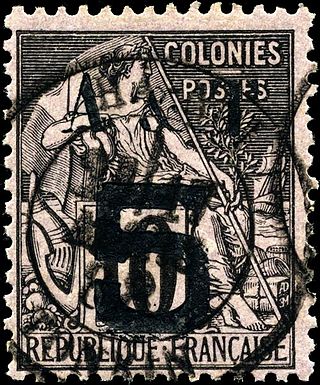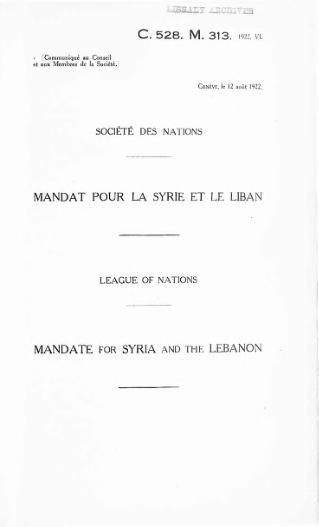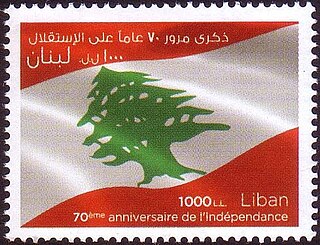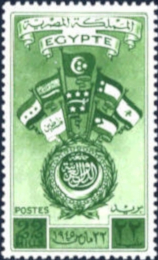
The Alawite State, officially named the Territory of the Alawites, after the locally-dominant Alawites from its inception until its integration to the Syrian Federation in 1922, was a French mandate territory on the coast of present-day Syria after World War I. The French Mandate from the League of Nations lasted from 1920 to 1946.

Latakia is the principal port city of Syria and capital city of the Latakia Governorate located on the Mediterranean coast. Historically, it has also been known as Laodicea in Syria or Laodicea ad Mare. In addition to serving as a port, the city is a significant manufacturing center for surrounding agricultural towns and villages. According to 2023 estimate, the population of the city is 709,000, its population greatly increased as a result of the ongoing Syrian Civil War, which led to an influx of internally displaced persons from rebel held areas. It is the 4th-largest city in Syria after Aleppo, Damascus, and Homs. It borders Tartus to the south, Hama to the east, and Idlib to the north, and Cape Apostolos Andreas, the north-eastern tip of Cyprus, is about 109 kilometres (68 mi) away.

This is a survey of the postage stamps and postal history of Indochina.

The Alawites, also known as Nusayrites, are an Arab ethnoreligious group that live primarily in the Levant and follow Alawism, a religious sect that splintered from early Shi'ism as a ghulat branch during the ninth century. Alawites venerate Ali ibn Abi Talib, revered as the first Imam in the Twelver school, as the physical manifestation of God. The group was founded by Ibn Nusayr during the 9th century. Ibn Nusayr was a disciple of the tenth Twelver Imam, Ali al-Hadi and of the eleventh Twelver Imam, Hasan al-Askari. For this reason, Alawites are also called Nusayris.

The Mandate for Syria and the Lebanon was a League of Nations mandate founded in the aftermath of the First World War and the partitioning of the Ottoman Empire, concerning Syria and Lebanon. The mandate system was supposed to differ from colonialism, with the governing country intended to act as a trustee until the inhabitants were considered eligible for self-government. At that point, the mandate would terminate and a sovereign state would be born.

Ubangi-Shari was a French colony in central Africa which later became the independent country of the Central African Republic on August 13, 1960. It followed the establishment of the Bangui outpost in 1889, and was named in 1894.
Each "article" in this category is in fact a collection of entries about several stamp issuers, presented in alphabetical order. The entries themselves are formulated on the micro model and so provide summary information about all known issuers.

This is a survey of the postage stamps and postal history of Chad.

This is a survey of the postage stamps and postal history of Hatay State, formerly the Sanjak of Alexandretta of the French Mandate of Syria.

This is a survey of the postage stamps and postal history of Lithuania.
This is a survey of the postage stamps and postal history of Algeria.
This is a survey of the postage stamps and postal history of Syria.

This is a survey of the postage stamps and postal history of Lebanon, formerly known as Liban.

This is a survey of the postage stamps and postal history of Jordan, formerly Transjordan.

This is a survey of the postage stamps and postal history of Egypt.

This is a survey of the postage stamps and postal history of Ethiopia. Long an independent state in Africa, messages were originally carried by couriers called méléktegnas, who held the letters attached to a stick.

This is a survey of the postage stamps and postal history of the Republic of the Congo, a former French colony known as Middle Congo or French Congo, and now often known simply as The Congo.

The following is a survey of the postage stamps and postal history of Somalia. From the late 1800s to 1960, northwestern present-day Somalia was administered as British Somaliland, while the northeastern, central and southern part of the country were concurrently administered as Italian Somaliland. In 1960, the two territories were unified as the Somali Republic.
This is a survey of the postage stamps and postal history of Madagascar, briefly also known as Malagasy.
Ayn al-Tineh is a town in northwestern Syria administratively belonging to the Latakia Governorate, located east of Latakia. Nearby localities include the district center of al-Haffah to the northwest, Slinfah to the northeast, Farikah and Nabl al-Khatib to the east, Shathah to the southeast, Muzayraa to the south and al-Shir to the west. According to the Syria Central Bureau of Statistics (CBS), Ayn al-Tineh had a population was 1,333 in 2004. It is the administrative center of the Ayn al-Tineh nahiyah ("subdistrict") which contains 13 localities with a collective population of 6,825. Its inhabitants predominantly Alawites.
















